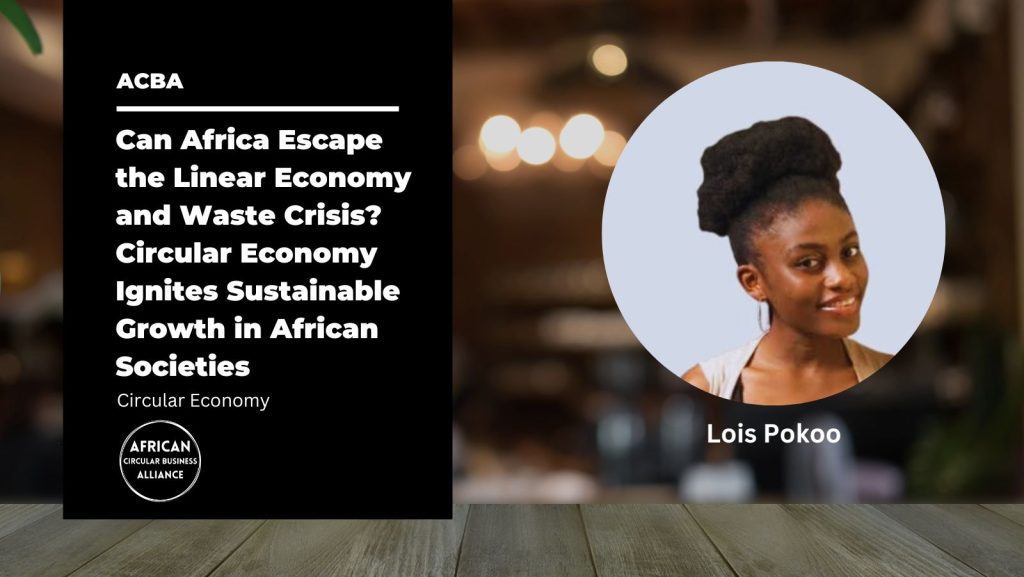Authored by Lois Pokoo and received contributions from Miguel Peters

This article intends to explore the application of the circular economy in some African societies, offering instances of how it is transforming these societies and industries, along with statistics and research demonstrating its advantages and potential for long-term sustainable growth.
The concept of a Circular Economy (CE) is gaining increasing attention as an effective approach to fostering sustainable growth. It seeks to maximise resource value by reusing, repairing, and recycling materials, reducing waste, and improving resource efficiency. In contrast to the conventional linear economy, which involves resource extraction, manufacturing, short product usage, and waste disposal, the circular economy aims to extend the life cycle of natural resources and materials by regenerating the ecosystems and their diversity.
Societies and businesses can benefit from adopting a circular economy as it is an essential tool for reducing emissions by gradually eliminating the need for new plastics and synthetic fibres, thereby phasing out fossil fuel consumption. CE encourages innovation and new trade opportunities, as companies could explore product longevity, remanufacturing, and leasing models over traditional ownership by reducing the demand for raw resources, lowering waste management costs, and improving resource efficiency. This innovative approach has the potential to save substantial amounts of money and create new jobs in industries such as recycling, repairing, and remanufacturing, which tend to require more labour than resource extraction and manufacturing.
Embracing the circular economy can significantly help African societies to address critical environmental, and socio-economic issues while laying the groundwork for long-term progress. Therefore, to successfully implement circular economy strategies, several guiding principles are crucial, including:
1. Extending Product Life Cycles:
In recent years, the idea of extending product life cycles has become more popular and one of the most common procedures is repairing and maintaining products instead of replacing them. This way, the need for continuous resource extraction is reduced and continuous remanufacturing is promoted creating a new branch of businesses with a worldwide potential profit of $55 billion a year by 2030. As an example, offering outdoor repairing facilities encourages newer businesses to start and customers to choose to repair over purchasing new products.
A recent study published by the Journal of Cleaner Production shows that extending products’ life cycle by remanufacturing reduces the need for primary energy consumption of raw materials because the practice of manufacturing new goods has been discontinued. There are already many African countries upcycling second-hand clothes (SHC) into new products such as laptop bags, handbags, backpacks, and other items as it becomes a common practice. These circular practices underscore significant environmental benefits and using this same approach in more complex ways will gradually eliminate the need for new plastics and synthetic fibres.
2. Closed-Loop or Circular Supply Chains:
The practice of regenerating ecosystems by eliminating waste, maximising resource efficiency and making products moving throughout the economy for as long as possible is referred to as closed-loop. To reduce waste and improve resource efficiency across the whole production process, circular economy usually applies to supply chains where repairing, recycling, remanufacturing, and repurposing materials play a key role. According to this study, efficient implementation of closed-loop supply chains is good for the environment as it contributes to global greenhouse gas emissions that might be reduced by 32% by 2030 if only the fast-moving consumer goods sector made the switch to a circular model. In Africa, few businesses and societies are implementing closed-loop business models that cut waste and preserve resources.
In South Africa, for example, sewage has recently been converted into energy in the form of biogas at the Northern Wastewater Treatment Works plant. The plant generates 15% of its electricity from methane gas produced on-site. To raise that figure to 50%, engineers plan to add more facilities. The structure could save 47% water, 15% energy, and 92.26 metric tonnes of CO2 emissions per year. The buildings will lessen their environmental effects and resource consumption, which will lower building operating costs by using less energy and preserving the bio-nutrients in the ecosystem.
In Kenya, waste plastic is recycled and turned into environmentally friendly plastic lumber profiles that are used in a variety of industries, including outdoor furniture, road signs, and fencing. Among its accomplishments is the recycling of over 3 million kg of plastic, with another 20.9 million kg to be recycled in the next ten years. According to an Insight Report from the World Economic Forum, more than 40+ direct jobs and 5,000+ indirect jobs have already been generated with a forecast that shows the generating of an additional 20,000 indirect jobs and 150 direct jobs over the next five years.
The use of closed-loop systems and circularity may potentially provide a $4.5 trillion upside in financial and economic value by 2030. These results show how supply networks may be made circular, which has enormous potential for resource conservation. We may decrease the total environmental effect connected with resource extraction and industrial processes by completing the loop. This will also reduce the extraction of new raw materials, preserve energy, and reduce our use of energy. So, there is clear evidence that the shift to circular supply chains can lead to substantial environmental and economic benefits.
3. The Role of Digitalisation:
In recent years, technology has become a powerful engine for the circular economy. This is largely due to its role in digitalising societies through smart supply chains. These smart chains, based on circular practices, optimise resource use and boost productivity throughout their cycles.
One major contributor to this transformation is the Internet of Things (IoT). Equipped with a vast potential to enhance value chains, IoT devices are actively applied in areas like waste management and remanufacturing. For example, they allow for real-time monitoring of resource utilisation, leading to more efficient waste management practices. Connected Logistics, a digital platform tracking goods and services across various transportation modes, serves as a prominent example.
Beyond hardware, innovative tech startups are also driving the circular economy forward. COLIBA Ghana Ltd., an African company, leverages a web application, mobile app, and SMS system to connect households and businesses with affiliated waste pickers. This enables convenient plastic waste recycling, promoting environmental sustainability. By offering quality control and sustainability solutions, COLIBA not only employs over 108 people and operates 41 collection centres, but has also processed over 700 metric tons of plastic waste. The company’s success extends beyond Ghana, with a sister company established in Côte d’Ivoire.
Therefore, as we transition towards a circular economy and a sustainable future, digitalisation promises to be a crucial ally.
4. Government Support and Legislation:
Government plays a pivotal role in transitioning to a circular economy by implementing effective policy frameworks. Extended Producer Responsibility (EPR) programs act as prime motivators, encouraging manufacturers to prioritize recyclable or reusable products. As an exemplary case, the Kenyan government’s 2017 ban on plastic bags, the strictest in the world, significantly reduced plastic waste. This comprehensive ban encompasses the manufacture, import, and use of all plastic bags for both home and commercial purposes.
Beyond EPR policies, some governments offer financial incentives to businesses embracing circularity. In Ghana, a seven-year tax exemption is available for companies utilising recycled plastic and polythene materials in commercial or agricultural settings. Furthermore, both Ghana and Nigeria are actively tackling e-waste management through legislation and implementation.
Ghana, for instance, has developed and enforced comprehensive technical guidelines for environmentally sound waste management, encompassing collectors, collection centres, transporters, treatment plants, and final disposal. Similarly, Nigeria established the E-waste Producer Responsibility Organisation of Nigeria (EPRON) to bridge the gap between the regulatory authority and stakeholders in the electrical and electronics sector.
EPRON’s efforts extend beyond regulatory enforcement. They levy appropriate fees on producers to fund the proper collection and treatment of product waste streams on manufacturers’ behalf. Additionally, EPRON mandates registration for all parties involved in the e-waste value chain, from importers to recyclers, which facilitates data collection and fosters the development of innovative circular business models, such as waste recycling and upcycling.
5. Moving from Ownership to Access:
The circular economy promotes the sharing economy, where resources are shared and exchanged instead of being individually owned. This concept is embraced by several car-sharing platforms and other online marketplaces for short to long-term accommodations. These platforms eliminate the need for everyone to own a car or vacation home, enabling people to efficiently utilise existing resources. By encouraging individuals to share their houses and vehicles, the circular economy reduces the demand for excessive production and consumption, contributing to sustainability.
6. Cooperative Initiatives and Collaborations:
A thriving circular economy relies on seamless collaboration between businesses, governments, civil society organisations, and consumers. This synergy drives innovation, fosters resource sharing, and builds a robust ecosystem. Recent initiatives like eco-industrial parks exemplify this principle by promoting resource efficiency, reducing costs, and facilitating resource circulation. In Namibia, a joint venture named Ujams combined government funding with expertise from global wastewater management companies to establish efficient treatment plants.
Another powerful example is the African Plastics Recycling Alliance, formed in early 2019 by packaging giants Coca-Cola, Nestlé, Diageo, and Unilever. This alliance exemplifies industry leadership in advancing circularity. Their collaborative goals focus on fostering innovation, developing technical solutions, and launching local initiatives to boost plastic collection and recycling.
7. Final Remarks
As the circular economy gains momentum, Africa has emerged as a fertile ground for its implementation. With its abundant natural resources and growing awareness of environmental challenges, the continent stands to reap significant benefits by embracing this shift away from the linear “take-make-waste” model. In summary, the article indicates that Africa’s journey towards a circular economy is with promise and great opportunities for today and future generations.
